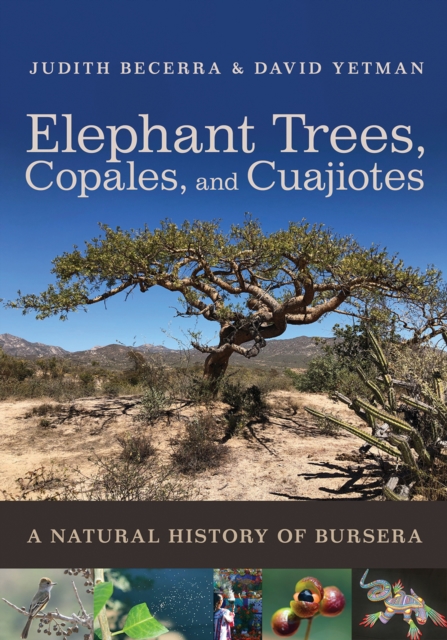
Elephant Trees, Copales, and Cuajiotes : A Natural History of Bursera PDF
by Becerra Judith X. Becerra, Yetman David Yetman
Please note: eBooks can only be purchased with a UK issued credit card and all our eBooks (ePub and PDF) are DRM protected.
Description
Predominantly native to the U.S. Southwest, Mexico, and the Caribbean, the various species of Bursera have been prized throughout history for their distinctive aromas, medicinal properties, workable wood, and attractive appearance. Despite its extensive past and current use as incense in religious ceremonies, and its resourceful antiseptic ability to treat a range of maladies, no comprehensive book exists on this vital yet overlooked plant. Highlighting bursera's importance and impact within the desert Southwest and Mexico, this volume will be the first book to describe the ecology, evolution, ethnobotany, and peculiar chemistry of the many species of Bursera.
In the United States, Bursera is represented by the short, contorted, and aromatic elephant tree of the hot Sonoran Desert and the stately and colorful gumbo limbo of southern Florida, while in the torrid lowlands of southern Mexico, the engines of evolution have produced forests dominated by dozens of species of Bursera, each with a peculiar ecological slot. This evolutionary tableau presents a complicated sex life that puzzles scientists. Recent research also reveals a gripping narrative of an epic struggle between trees and the insects that would subsist on their leaves: the insects seeking to exploit a food resource, the trees reacting with ever-changing, dramatic counter strategies. In addition to the fascinating and intricate workings of the genus’s ecological adaptations, burseras play a formative role in the lives of indigenous populations. Native peoples relish the plants’ aromatic resin, workable wood, and often colorful bark as a source for endless human applications.
Written in an engaging style, enhanced with two hundred color photographs, and complete with a compendium of species descriptions, this book will be an essential reference on a significant North American plant.
In the United States, Bursera is represented by the short, contorted, and aromatic elephant tree of the hot Sonoran Desert and the stately and colorful gumbo limbo of southern Florida, while in the torrid lowlands of southern Mexico, the engines of evolution have produced forests dominated by dozens of species of Bursera, each with a peculiar ecological slot. This evolutionary tableau presents a complicated sex life that puzzles scientists. Recent research also reveals a gripping narrative of an epic struggle between trees and the insects that would subsist on their leaves: the insects seeking to exploit a food resource, the trees reacting with ever-changing, dramatic counter strategies. In addition to the fascinating and intricate workings of the genus’s ecological adaptations, burseras play a formative role in the lives of indigenous populations. Native peoples relish the plants’ aromatic resin, workable wood, and often colorful bark as a source for endless human applications.
Written in an engaging style, enhanced with two hundred color photographs, and complete with a compendium of species descriptions, this book will be an essential reference on a significant North American plant.
Information
-
Download - Immediately Available
- Format:PDF
- Pages:272 pages
- Publisher:University of Arizona Press
- Publication Date:06/02/2024
- Category:
- ISBN:9780816551958
Information
-
Download - Immediately Available
- Format:PDF
- Pages:272 pages
- Publisher:University of Arizona Press
- Publication Date:06/02/2024
- Category:
- ISBN:9780816551958






